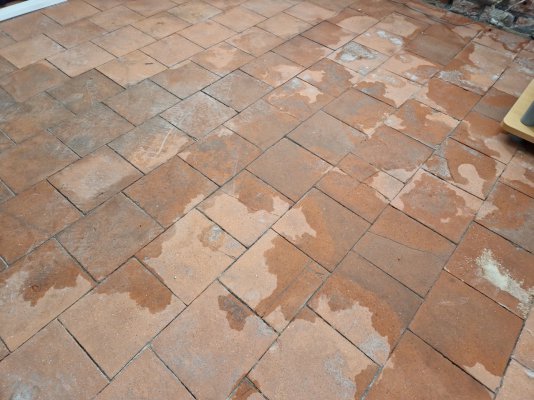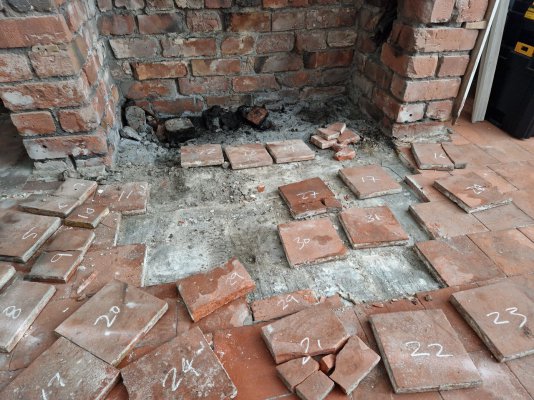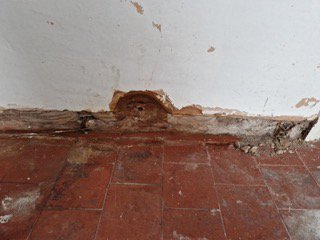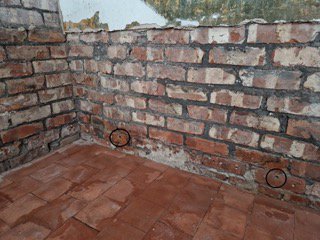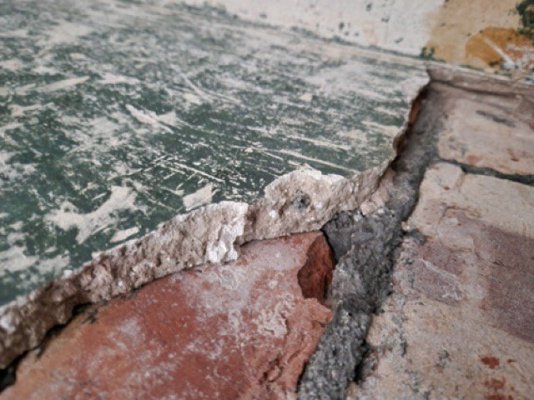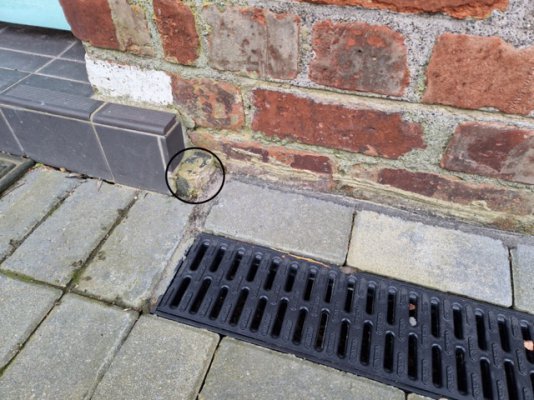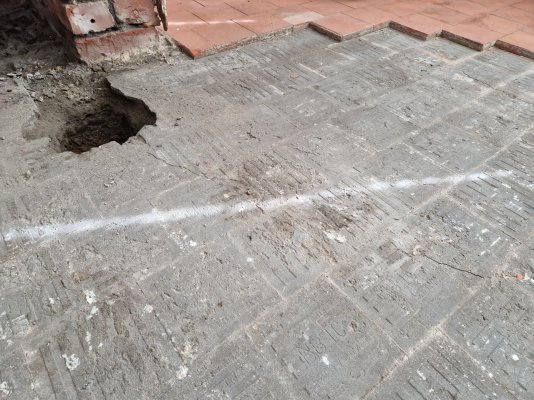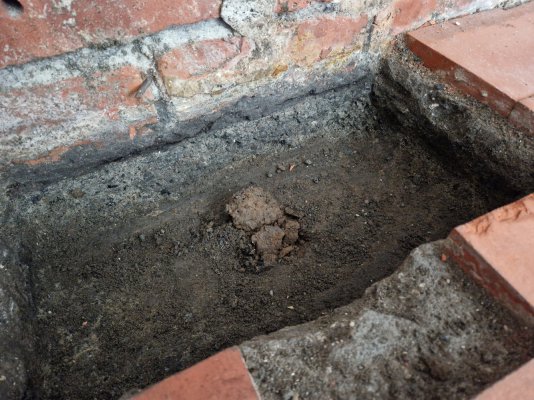Good afternoon. First post from a frequent guest. I'm currently focusing on the living room in a solid floored 1930s semi. The state of it may resonate with many - carpet over quarry tiles, wallpaper over gypsum plaster and cement render, applied, in this case following the installation of a truly worthless osmotic DPC. The walls are now back to brick below what I believe is the original lime. Most of the things I've reversed in the last several months were carried out around 2007 but I think the carpet may have been there before then, perhaps kicking off a downward spiral of misdiagnoses around damp culminating in the electro-osmosis farce. After removing the not very nice fireplace and letting the space dry out, I had the exposed brickwork in the firebox and the lower courses of the walls cleaned with olivine. I had no success getting the muck off the quarries so they were treated too. It looked promising for a while but I think as much I wanted to keep them, they may be shot. And I'm not necessarily recommending the olivine process to anyone at least for the floor: I was simply willing to have it done. Now, I've started taking the tiles up working from the fireplace as there's a line of damp (there to begin with but more visible now - Winter a factor perhaps) coming through the tiles from there extending to the external wall. Several smaller areas as well. The substrate looks like compacted ash with a lime/sand bed for the tiles. Some tiles are in good shape, others are fracturing along lines not visible at first as I'm lifting them and with no effort at all. My first question would be whether lifting the tiles (replacing lost causes with reclaimed) and screeding anew beneath with lime would be enough of an uplift or, given movement over time may well cause cracking underneath again, whether something like limecrete would be a better option longer term? The back garden was heavily cultivated years ago. A lot of that vegetation as well as a tree at the front of the house has gone now (planted too close to begin with) and block paving was installed around two sides of the house. There are two aco drains in the front to direct water away from the house and the block header course is inclined at the foot of the wall. I'm hoping that's all doing what is intended. In better weather, I will wash out the remaining kiln sand and replace with a setting alternative. A second question begs then whether investigation further beneath the floor would also be advisable because something has changed under the house? I'd also note that the quarries extend throughout the ground floor; there is only a small hallway and a kitchen beyond the living room and in these spaces they have been over-tiled. The wall between the kitchen and living room was plaster-boarded kitchen side - there is some discolouration and salt accumulation visible in the painted surface. Not sure how much of that is condensation and/or extra moisture going into the wall from the floor with two skins. Powered ventilation would help most likely and perhaps re-plastering with lime. I mention these because going with a limecrete block might make better sense throughout while also knowing it is sometimes better to only change what you can't manage anymore. I'd imagine the quarries are probably in a bad way under there though. I know seasoned contributors to the forum are not necessarily in favour of blocks of any kind going down in older houses and modern builders at least, as I have come to anticipate now, all suggest concrete and a sheet and nothing else. Any observations greatly appreciated. Attached.
